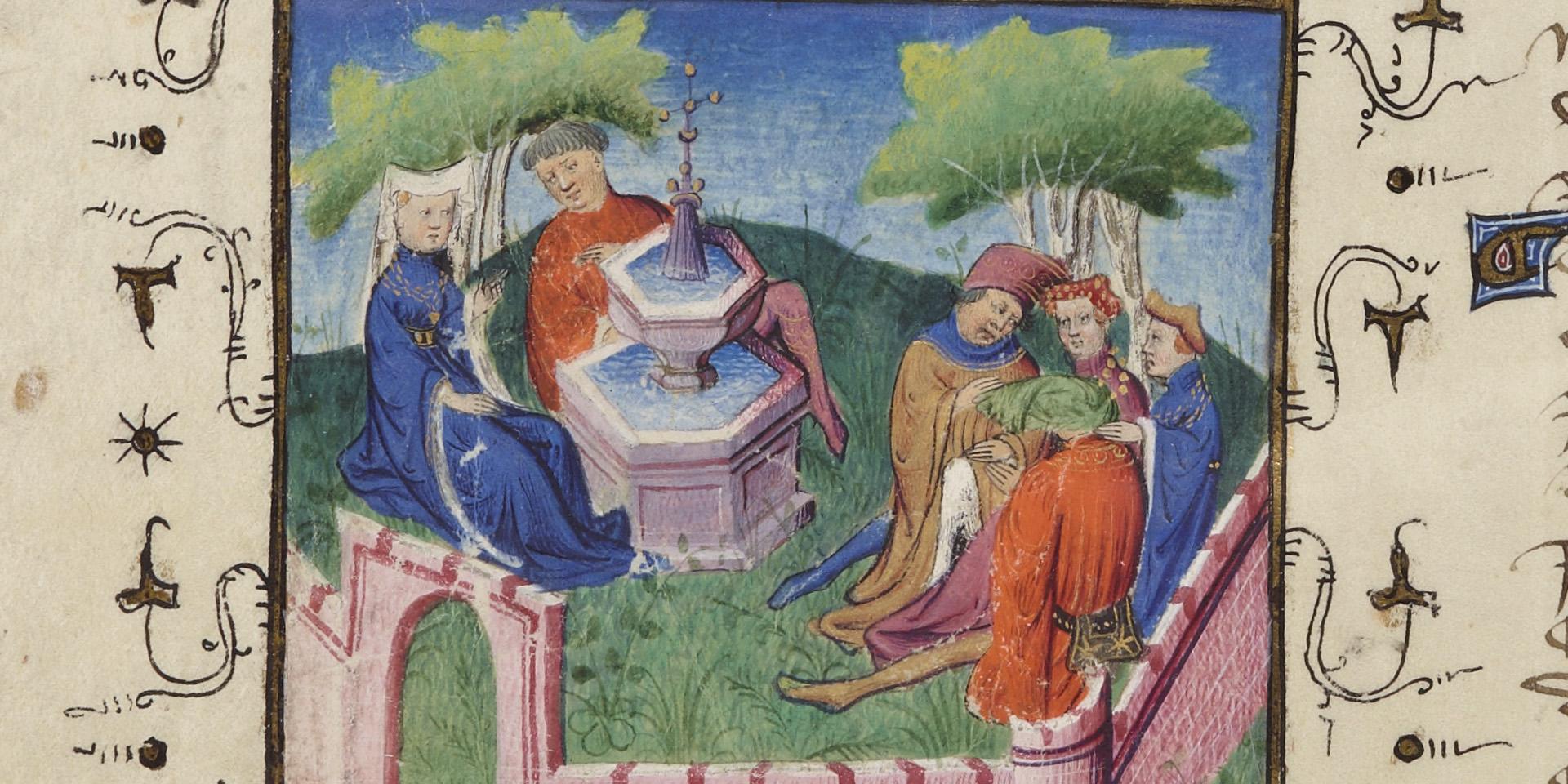Aux origines : sources mythologiques et bibliques - in english
In the context of mythology, the ancient gods, in their most surprising manifestations, often resorted to the garden, making this space, itself populated by divinities, an eminently sacred perimeter. Ovid's Metamorphoses provides numerous accounts of this, such as that of Vertumne, god of gardens and orchards, who was able to perform surprising transformations on himself, like the one which, under the guise of an old woman, enabled him to approach the nymph Pomona, the chaste fruit divinity firmly attached to her garden. The artists' hand seizes upon this universe, familiar to the cultural climate of the Renaissance, to the point of inventing sumptuous gardens where, as in the case of the novel of Love and the Beautiful Psyche converted into tapestries for King François I, the ancient sources breathed no word of it.
Throughout the narrative, biblical sources mention numerous gardens, such as the one where Susanna bathing is observed by two old men in the Book of Daniel. But three gardens occupy a fundamental place. In the Book of Genesis, before the Fall, there was a garden: Eden, the memory of which has not disappeared. Paradise, in Persian and then in Greek, refers to a park, a garden, enclosed by definition, to keep wild animals. And the word garden, of Germanic origin, is based on the same root as the verb "to keep".
The second of the Bible's great gardens, also hortus conclusus, is that of the Song of Songs, symbol of love and model of the encounter with God. In the earliest commentaries, this mystical place is transformed into a metaphor for the soul. The third of the great biblical gardens, the Mount of Olives, is the setting for the story of the Passion and Redemption. At the Resurrection, Mary Magdalene discovers the empty tomb, and then it's Christ she mistakes for the gardener who reveals himself to her. In Albrecht Dürer's Little Passion on wood, this intimate irruption of eternal life prompted artists to implement appropriate plastic solutions: emphasis on the accessories pointing to the divine gardener and the play of light on certain glimpses prolonging the narrative; brilliance, color and exaltation of certain narrative details in the art of enameling.

